I noticed lately that I seem to have lots of good intentions and plenty of ideas but a serious ebb in time actually spent working on art. Many things in life seem to have taken the front stage. Why is that? And how can I fix it? I looked into it and thought I’d share some of the tips I learned.
TAKE NOTES.
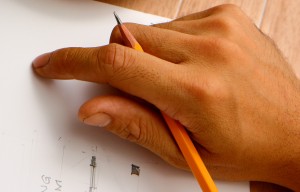
Take Notes
Notice what you’re noticing! I have been collecting inspirations, but in a haphazard way. Sometimes I think that I will just remember what I saw on that walk that day. But these glimpses/ flashes are often fleeting. Anything that says a silent “wow” is of some importance and worth taking note. Sometimes it is just a word or a shape or a color combination in someone’s garden, but these tidbits are worth collecting and giving further contemplation later on. So I got a purse-sized notebook, where I can note the topics that sing to me. Sometimes I have torn out a swatch of something from a magazine that caught my eye, or printed something from the web, thinking I’ll get back to it. It’s in a pile on the table. See the problem?
Those things are not in good order for finding later on. Today I labeled a few file folders with topics (like color combos, textures, shapes, words, faces, time, new things to try…) that I can slip my papers into when I tear or print an idea. I’ll be better able to find them when I need them.
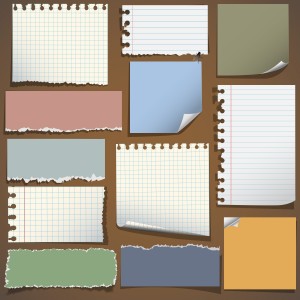
lots of notes
I read a recommendation that one should have a Ta-Da list as well as a To-Do list. Identifying and writing down the small steps one has taken on a project underway or the several projects you have touched throughout the day helps to see what you have accomplished. My To-Do list is still lengthy, but with the Ta-Da list I no longer feel that my day was lost somehow. It helps to clarify the journey and recognizes the little bits of progress made each day.
START A ROUTINE.
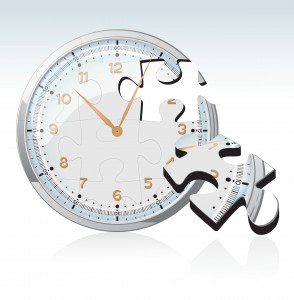
Spend time in your studio
Hang out in your studio for as long as you have time, but I try for at least 30 minutes each day. Be fully present with this space, the materials, and your craft thoughts, and let other things on today’s to-do list drift off for a while. (Trust me, those other things will eventually return to their original status.) Even just tidying up the studio and handling the materials often gets the creative juices flowing if you find yourself lacking ideas at the moment. “Develop a routine that works for you,” suggests Tory Hughes, “and then trust it to support you.” Lately my 30 minute goal has been happily lengthening.
Extra note: the word “studio” is defined here as “the place you do your art”. It could be anywhere. It is more a state of mind. For some of us, our studio is a corner of the living room or our patio table on a sunny day. Whatever works, make it yours. I used to soak my reed in the pool while the kids swam.
START ANYWHERE that calls to you;

Start anywhere that calls to you
an unfinished project in the corner or sorting new threads. Tidy the desktop. Immersion is important for creativity, as is relaxation/calm. And don’t forget to play! Whimsy is often the beginning of something important. Don’t let small nagging fears get in the way of starting something new. Stay as open and willing as you can. Sometimes when I have nothing happening and no ideas, I just handle the materials in the studio. I will put colors or textures together and watch the dialog that ensues. It gets fun and ideas start to bubble up.
Know what you are starting with; your skills, strengths, interests, your preferred palette, etc. Take a good inventory and then question it all, in bulk or one little item at a time. Creativity is about stretching yourself, not living within limitations. Try something new or use something familiar in a new way. “Risk avoidance is a sure way to remain mediocre,” writes David Lyman, but Maria Elkins suggests that rather than taking a huge leap out of your comfort zone, it is often more comfortable to stick “one foot out into the unknown while keeping the other foot on familiar ground.” A gentle stretch.
*If you’ve been doing a lot of one thing lately, change it up and do something different, just to sharpen your creativity. Learning from the greats, and exposing yourself to better work is also recommended. Goals can be developed using studio time that is not feeling exciting. The notebook can be useful then too.
*A story can be told in your medium whether or not you have perfect skills. Don’t let small imperfections stop you and don’t compare yourself with others who have been in the field a long time. Perfection kills passion. Enjoying the process and expressing yourself is more important than perfection. It’s not about the project. It’s about the “doing”.
*Keep your mind on your hands, and don’t let the brain chatter about other things or, worse, become a critic. No one needs criticism or negative labeling while being creative. Be immune to criticism, especially self-criticism, but responsive to feedback.
*However, it is quite helpful to engage the “what-if” part of the brain along the way. What if I added red there? What if I changed this pattern here? Ideas are generated thus, some of which you could write down for a later date in that handy notebook, and some might generate a spark for the current piece. Thoughts of “what if” might help you listen more to your inner urgings than the traditional rules or methods of your craft. You might invent something. Next time you wonder what would happen if…. Answer yourself with “I don’t know. Why don’t I try it and see what happens!?!”
*When you hit a difficult spot, keep your confidence up. Challenges are growth opportunities. It might help to get over the hump by acknowledging the many challenges that have been met before. Try to remain detached from expectations and let the work emerge. In these times of hitting a wall, it often helps me to remember Joseph Campbell’s words: “The cave you fear to enter holds the treasure you seek.” or “Where you stumble, there lies your treasure.“ Don’t hold back, especially if it has to do with fears of acceptance.
*Art is communication. Do what speaks to you, in color choices, form, and technique, and the work will resonate YOU.
*Often when inspiration strikes on another topic or when I am not able to start something new, I will quickly gather up the supplies needed along with a quick sketch and place it all in a zip bag or a tray and stash it on a shelf. At the very least I now have that notebook handy to make a new entry for this new attraction/distraction. These ideas often call me back into the studio (or notebook), to add another something or tweak it a bit more. In no time at all, a new project is anxious to begin. It’s nice to have projects on the shelf, ready to go, urging you back into the studio to get started.
*That said, I also find that one project can feed the other so it sometimes works for me to have more than one piece in progress. Some fill a space in my day differently than others. That small portable project that I can work on at odd scraps of time helps fill in otherwise wasted minutes. I know a knitter who even works on projects in line at the grocery store. Having more than one project keeps my mind fresh and invigorated. Following whims and “what ifs”, taking breaks, following urges, (and even sometimes rejecting routine) are factors in my creative growth over the years.
*It is a good practice to stay on top of your physical needs while in the studio, like resting, stretching, hydrating and stopping to eat when you get hungry. Keeping your tools and materials clean and organized and within reach helps productivity as well. When my table gets crowded, I can’t work efficiently. Adequate light is essential. Music might be helpful too. Bulletin boards can be a valuable visual stimulus.
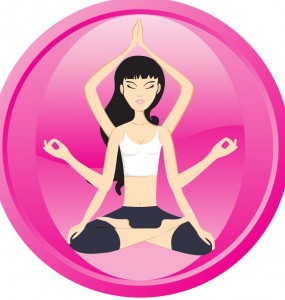
Keep yourself healthy
“Each year clean and prune your studio to promote new growth,” says Hughes” “Clear out the undergrowth” to let in new light and air. “Let this be a time when you consider your current focus and let go of materials that are no longer of real interest or not supportive of your intended focus.”
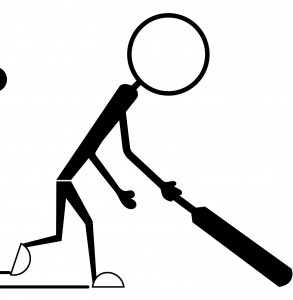
clean and prune your studio to promote new growrh
I have warm memories of magical times when I have had the luxury of inspired art time. Remember how time stands still in the studio sometimes …and you lose track of everything else …and creativity is effortless and the results are surprising? I want more of that!! And I want it for you too! When the stars are aligned and I hear inspiration call, there is nothing like having that creative space organized and ready for me, and that gift of time to create. No guilt, just the joy of inspiration.
Click here for the next article